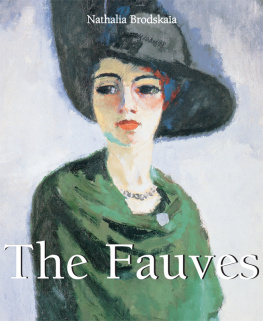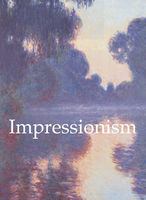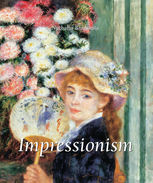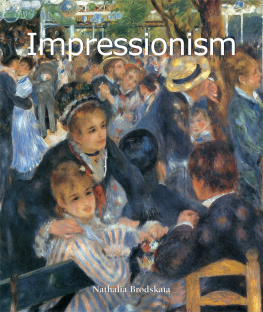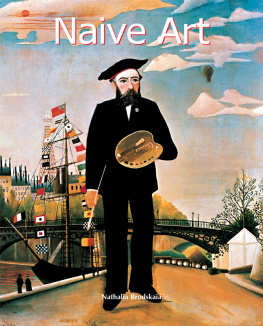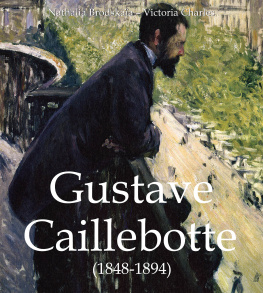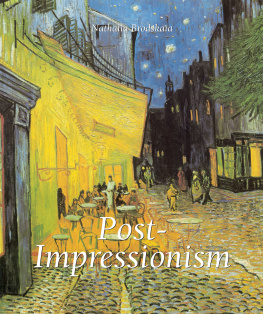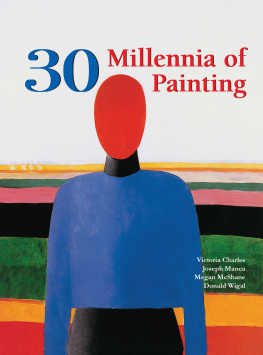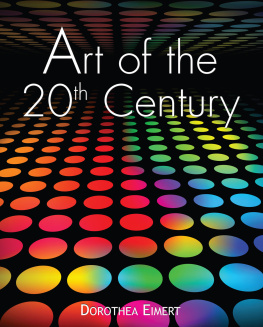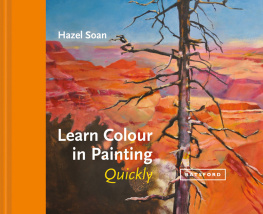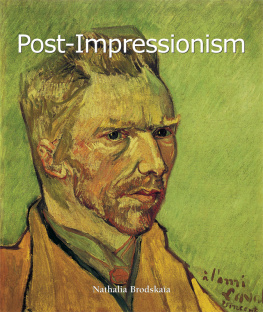Author:
Nathalia Brodskaa
Layout:
Baseline Co. Ltd
61A-63A Vo Van Tan Street
th Floor
District 3, Ho Chi Minh City
Vietnam
Library of Congress Cataloging-in-Publication Data
Brodskaia, N. V. (Natalia Valentinovna)
[Fauves. English]
The Fauves / Nathalia Brodskaia. -- 1 st ed.
p. cm .
Includes bibliographical references and index.
1. Fauvism. 2. Painting, Modern--20 th century. I. Title.
ND196.F3B7613 2011
709.04 043--dc23
2011024523
Confidential Concepts, worldwide, USA
Parkstone Press International, New York, USA
Auguste Chabaud, Artists Rights Society (ARS), New York / ADAGP, Paris
Othon Friesz, Artists Rights Society (ARS), New York / ADAGP, Paris
Henri Manguin, Artists Rights Society (ARS), New York / ADAGP, Paris
Andr Derain, Artists Rights Society (ARS), New York / ADAGP, Paris
Louis Valtat, Artists Rights Society (ARS), New York / ADAGP, Paris
Georges Rouault, Artists Rights Society (ARS), New York / ADAGP, Paris
Kees van Dongen, Artists Rights Society (ARS), New York / ADAGP, Paris
Albert Marquet, Artists Rights Society (ARS), New York / ADAGP, Paris
Maurice de Vlaminck, Artists Rights Society (ARS), New York / ADAGP, Paris
Raoul Dufy, Artists Rights Society (ARS), New York / ADAGP, Paris
Jean Puy, Artists Rights Society (ARS), New York / ADAGP, Paris
Ren Seyssaud, Artists Rights Society (ARS), New York / ADAGP, Paris
Succession H. Matisse, Paris / Artists Rights Society (ARS), New York
Henri Le Fauconnier, all rights reserved
All rights reserved.
No part of this publication may be reproduced or adapted without the permission of the copyright holder, throughout the world. Unless otherwise specified, copyright on the works reproduced lies with the respective photographers, artists, heirs or estates. Despite intensive research, it has not always been possible to establish copyright ownership. Where this is the case, we would appreciate notification.
ISBN: 978-1-78310-393-5
Nathalia Brodskaa
THE FAUVES

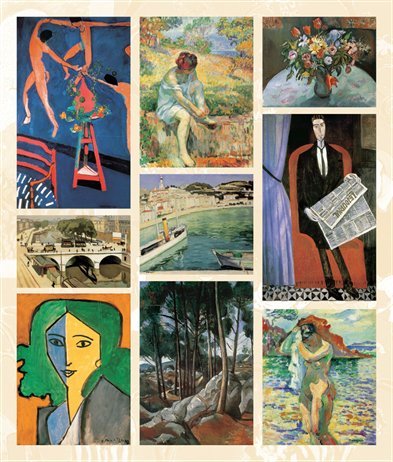
CONTENTS
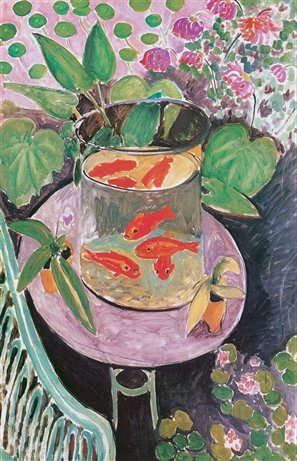
Henri Matisse, Goldfish, 1911.
Oil on canvas, 147 x cm .
Pushkin Museum of Fine Arts, Moscow.
A HISTORY OF FAUVISM
Decade follows decade in art, like waves breaking on a beach, each bringing its own deposits which, in turn, cover those that came before, dimming what had once seemed strikingly brilliant. But time does not work on everything with equal force. The art of the Fauves has not faded. Born within French painting at the turn of the century, Fauvism immediately demanded attention.
The stormy reaction it provoked on its emergence in Paris in 1905 was, in itself, an acknowledgement of the strength of this new phenomenon in the fine arts. Fauvism was a real danger to academically congealed art calculated to appeal to the narrow-minded customer, to all painting which sought after prosperity by carefully absorbing innovation, turning it into the fashionable that would shock no-one through unwarranted boldness.
Two or three years proved sufficient for the Fauvist painters to acquire if not a permanent public, then at least their own dealers and admirers. The hostile voices which continued to make themselves heard were not enough to hinder the Fauves from competing freely with other trends. Each of them lived a life in keeping with his character and the unique features of his work, yet none of them experienced long years of hopeless poverty or a sense of impotence in the struggle with the might of official art. None of the Fauves left a studio full of works piled up and never sold in this sense fate was kinder to them than to Gauguin, Van Gogh, or Toulouse-Lautrec. Even during their lifetimes, the Fauves paintings had found a place in the greatest private collections and then in museums, while they themselves were written about in the press and respected by contemporaries. The Fauves were acknowledged masters before they reached the age when grey locks and a noble bearing often stood substitute for true measures of talent. It might seem that when the general public would become more familiar with them, the intensity of the first reaction would diminish, but this was not the case. They are all long since gone, yet one still experiences a sense of shock on encountering their paintings.
Fauvism received its name in 1905. In October of that year, a number of young painters about ten altogether presented their works at the Salon dAutomne in Paris. Their unusually bright works vibrant with colour were assembled in a single hall. In his account of the exhibition for the 27 October edition of the magazine Gil Blas, critic Louis Vauxcelles wrote: In the centre of Room VII stands a childs torso by Albert Marquet. The candour of this bust is striking in the midst of an orgy of pure colour: Donatello among the wild beasts. A simple explanation, then, in which chance played a significant role, and from that moment on, the names of Matisse, Derain, Vlaminck, Van Dongen, Camoin, Puy, Marquet, Manguin, Rouault, Dufy, Friesz, Valtat and a few others were generally associated with the word Fauvism.
The very way in which the term originated is positive proof that the phenomenon it described already possessed definite recognizable characteristics. Nobody at that time, including Vauxcelles himself, was able to indicate its boundaries or predict the full significance of what had emerged. Most likely, the fact that interest in Fauvism has remained keen for more than three-quarters of a century causes us to reflect again on what essentially occurred at the Salon dAutomne and who it was that Vauxcelles christened wild beasts.
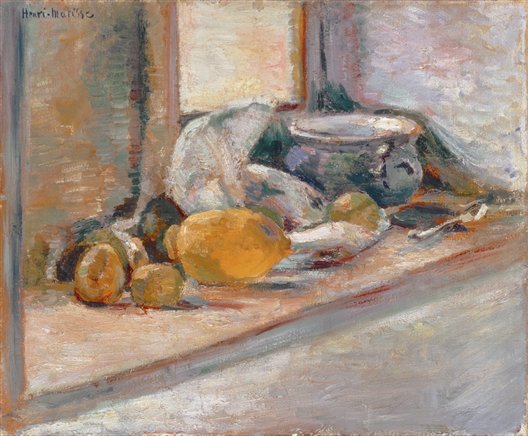
Henri Matisse,
Blue Pot and Lemon, 1897.
Oil on canvas, 39 x 46.5 cm .
State Hermitage Museum, Saint Petersburg.
In the second half of the twentieth century, reminiscences about the Fauves and the assessments of contemporaries inevitably gave way to the research of art-historians, yet this process revealed a surprising quality of Fauvism: even with the test of time, it remains as hard as ever to define precisely its chronology and characteristics which defy consistent classification. It is no coincidence that, despite the existence of an extensive literature, scholarly publications devoted to Fauvism appear with titles like The History of Fauvism Reviewed and Corrected or Fauvism Re-examined. It is no coincidence that, from the middle of the century on, one exhibition has followed another as testimony that interest in Fauvism now extends beyond Paris, beyond even Europe. Fauvism is linked to other artistic phenomena of the same period, while, time and again, scholars return to the assembly of canvases with which it all began in 1905. The reasons for this attention lie, most probably above all, in two obvious facts: with the passage of time, new aspects of the revolution which took place in painting at the beginning of the century are being discovered and, no less important, the young wild beasts of the opening years of the century all, without exception, became major figures in French twentieth-century painting. Cause enough to carry out one more examination of Fauvism as a conglomeration of unquestionable individual artistic talents and as an artistic association which brought about not the levelling of talents but, on the contrary, the development of each of the artists own creative strengths.

